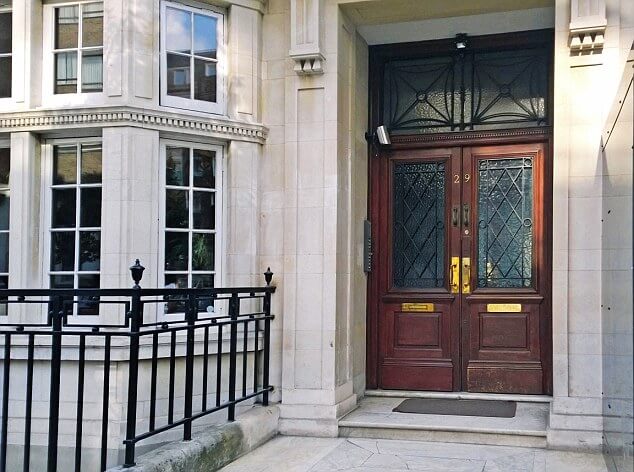
by John McCarthy Consulting Ltd. | Jan 6, 2020 | Blog, News
A ten-year anniversary meeting of the Global Forum, celebrating the global impact of tax transparency, was held in Paris recently.
It was hosted by the OECD – Organisation for Economic Co-operation and Development – which has been promoting tax transparency over the last decade.
Two features of the OECD tax transparency agenda are:
- Exchange of Information on Request (EOIR) – which has led to the recovery of nearly €7.5 billion of additional tax revenue and;
- Automatic Exchange of Information (AEOI) – on the financial accounts of non-residents. Commencing in 2017 with 100 countries sharing information on 11 million offshore accounts, it has increased to 47 million such accounts being exchanged in 2018. The total value of these financial accounts exchanged in 2018 came to €4.9 trillion. This level of cooperation helps greatly enhance tax transparency.
There is more information about the exchange of information in the Global Forum Anniversary Report.
Ireland is an active member of the OECD and a good example of our participation is the ban on the use of bearer shares introduced in the Companies Act 2014. This ban has also been implemented in about 90% of the 131 member states in the OECD which either completely disallow the use of bearer shares or ensure that the owners can be identified.
A bearer share is an equity security, deliberately missing the owner’s name, which is owned by whoever holds the physical stock certificate. They were a popular vehicle for tax evasion as the issuing entity does not have to register the owner of the stock or track subsequent transfers of ownership. Their existence was previously a longstanding impediment to tax compliance efforts across the world.
Since 2017, member states must also ensure that public beneficial ownership registers of legal entities are maintained, so these cannot be used to conceal ownership and evade tax. Ireland’s register is fully active since 22 November 2019 and is at the RBO.
See our new fully updated AML Policies & Procedures Manual which includes a section that fully deals with these requirements and is now available here.
It is updated for the Criminal Justice (Money Laundering and Terrorist Financing) Acts, 2010 to 2018 which came into force on 26 November 2018. It retails at €150+VAT.
See also our on-demand webinars on AML, accessible at any time.
Other webinar topics include Investment Property Accounting, FRS 105, Common Errors in FRS 102 Accounting and the latest on FRS 105 and company law, visit our online webinar training website. Once viewing is completed, customers will receive a CPD Certificate confirming their learning.

by John McCarthy Consulting Ltd. | Dec 18, 2019 | Blog, News
A new requirement – to protect firms against the risk of money laundering – came into law last year, but many firms may not yet have prepared the relevant document.
The Fourth Money Laundering Directive (2015/849/EC) was transposed into Irish legislation in November 2018 by way of the Criminal Justice (Money Laundering and Terrorist Financing), (Amendment) Act, 2018 (the “2018 Act”).
One of the main changes introduced by the 2018 Act is that it introduces the requirement in Section 30A to carry out and document a Firm-Wide Business Risk Assessment of the business/firm itself.
To assist accounting entities, we have prepared a Word template which retails for €60+VAT, available at this link.
We have also produced a 44 minute webinar on how to prepare the Firm Wide Business Risk Assessment.
If you have already prepared the document, it may need updated for changes to any of the five key areas listed below.
Our Firm-Wide Business Risk Assessment template is pre-populated with some text to help you prepare the document. You simply remove the example text and insert text that is more appropriate concentrating on the five key areas that under Section 30A. These are:
-
- Clients of the firm – who are they;
- Products and services provided – how might they be abused for money laundering;
- Countries that our clients operate in and which may present certain geographic risks;
- Transactions we are involved in (e.g. certain clients’ money and similar transactions may pose additional risk); and
- Delivery channels e.g. do we always meet our clients face to face? If you do, this would be a risk mitigating factor.
The document is based on the professional guidance produced by the CCAB in its document called the CCAB-I Technical Release 01/2019.
Please find links here to our:
- Webinar on AML Business-Wide Risk Assessment – €45
- Word template containing all the guidance you should need to prepare the Business Risk Assessment – €60+VAT
Our new fully updated AML Policies & Procedures Manual includes a section that fully deals with these requirements and is now available here. The Manual is updated for the Criminal Justice (Money Laundering and Terrorist Financing) Acts, 2010 to 2018 which came into force on 26 November 2018. It retails at €150+VAT.
See also further on-demand webinars on AML, accessible at any time.
Other webinar topics include Investment Property Accounting, FRS 105, Common Errors in FRS 102 Accounting and the latest on FRS 105 and company law, visit our online webinar training website.
Once viewing is completed, customers will receive a CPD Certificate confirming their learning.

by John McCarthy Consulting Ltd. | Dec 4, 2019 | Blog, News
Journalists at the London Times are to be congratulated for today, 4 December 2019, exposing a web of alleged money laundering centred on a company formations business based in London.
Of course, the story was originally covered by Guardian journalist Oliver Bullough in 2016 and in his 2018 book ‘Moneyland’.
The Times reported: ‘Leaked documents show links to businesses set up by Formations House, a London-based company at no. 29 Harley Street, that establishes and helps to manage companies, and scams involving more than £300 million.’
‘These include vintage wine frauds, fake stock market tipsters, dodgy gold and diamond traders, overpriced land investment schemes and a Hollywood heist carried out by a bogus aristocrat.’
One of its off-the-shelf companies dates back to 2002 and is for sale for £75,000 while a more recently incorporated company in June 2018 sells for £99.
The message for accountants is to make sure that your AML take-on procedures are thorough. The best place to stop a money launderer from becoming one of your clients is at the beginning of the business relationship.
Our new fully updated AML Policies & Procedures Manual includes a section that fully deals with these requirements and is now available here.
It is fully updated for the Criminal Justice (Money Laundering and Terrorist Financing) Acts, 2010 to 2018 which came into force on 26 November 2018. It retails at €150+VAT.
See also our on-demand webinars on AML, accessible at any time.
Other webinar topics include Investment Property Accounting, FRS 105, Common Errors in FRS 102 Accounting and the latest on FRS 105 and company law, visit our online webinar training website. Once viewing is completed, customers will receive a CPD Certificate confirming their learning.

by John McCarthy Consulting Ltd. | Nov 25, 2019 | Blog, News
In a recent Financial Times story, it was reported that the EU is proposing to set up a new anti-money laundering body in the wake of recent money laundering scandals.
EU finance ministers are expected to meet in December and propose the setting up of a new independent body to enforce money laundering prevention measures across the EU.
The proposal would trigger a significant increase in the response to a wave of money-laundering scandals that have occurred since 2017. These scandals have revealed weaknesses in the EU banking system which have been exploited by criminals.
The two most notable recent scandals have involved two of Europe’s most high profile banks: Danske Bank and Deutsche Bank.
US law enforcement authorities uncovered institutionalised money laundering in 2018, at the now defunct Latvian bank ABLV — much of it linked to Russia. This was just one in a series of serious blows to European confidence in its banking system’s defence against crime.
Another setback involved revelations that €200bn in suspicious transactions had been moved through Danske Bank’s Estonian branch. ING was fined €775m for compliance failings and Deutsche Bank was ensnared in a scheme to illicitly shift criminal funds from Russia to the west.
For our latest AML Training webinar for Accountants go to this link and for Trust and Company Service Providers go to this link.
All 19 training webinars are listed here and on completion you receive a CPD certificate by email.
We also publish a completely up to date AML Policies & Procedures Manual 2019 which includes a template for the Business Risk Assessment which each AML supervised business must have in place since 26 November 2018 under the latest legislation which is the Criminal Justice (Money Laundering and Terrorist Financing) Acts, 2010 to 2018. This manual retails for only €150+VAT and may be downloaded, ready to use, in Word format.
We also sell several letters of engagement and other templates which all comply with the Criminal Justice (Money Laundering and Terrorist Financing) Acts, 2010 to 2018.

by John McCarthy Consulting Ltd. | Nov 16, 2019 | Blog, News
As we pointed out in our last two blogs here and here, Carillion was less than transparent in its 2016 financial statements about its reverse factoring arrangements.
For a much better explanation of supply chain financing (an alternative name for reverse factoring), see Note 19 ‘Trade and Other Payables’ on page 177 of the 2018 financial statements of AstraZeneca Plc.
Since Carillion commenced the arrangement in 2012 , Carillion’s customers were taking longer and longer to pay – by 2016, receivables were 38% of sales. Carillion was taking even longer to pay its suppliers. By 2016, if you include the reverse factoring, payables were around 50% of sales, or six months.
As Carillion was a very low-margin business, its operating margin (operating profit/sales) over the 10 years from 2006 was highly variable, but was in the range of 1% to 4% according to the LBS article. Its earnings margin (earnings/sales) was between 2% and 3%.
But what did these numbers actually mean? Long-term contracting always rings alarm bells because it offers companies discretion over when to report the income from a contract, with the risk that they will be tempted to report revenues earlier and costs later. Carillion’s financial statements offered no clue as to how it was accounting for long-term contracts.
IFRS 15 on Revenue Recognition would have forced the company to write down retained earnings by well over £100 million, according to a 2017 disclosure note. Apparently, Carillion included the change in the reverse factoring creditor – essentially a financing cash flow – as an operating flow in the calculation of operating cash flow and thus in the calculation of cash conversion.
In the 2016 financial statements, Carillion reported operating profit of £145 million and an operating cash flow of £115 million, which is a decent cash conversion ratio. But that operating cash flow was increased by the approx. £200 million increase in ‘other creditors’ during the year. Without that, operating cash flow would have been £-85 million.
For more on the latest rule changes on Investment Property Accounting please see our webinar on ‘Investment Property Accounting under FRS 102’.
See our completely up to date 2019 AML Policies & Procedures Manual for Accountants.
Also see our newest engagement letter publications for Partnership Compilation including Tax Engagement Letter under FRS 102 and FRS 105 for €50 each.










